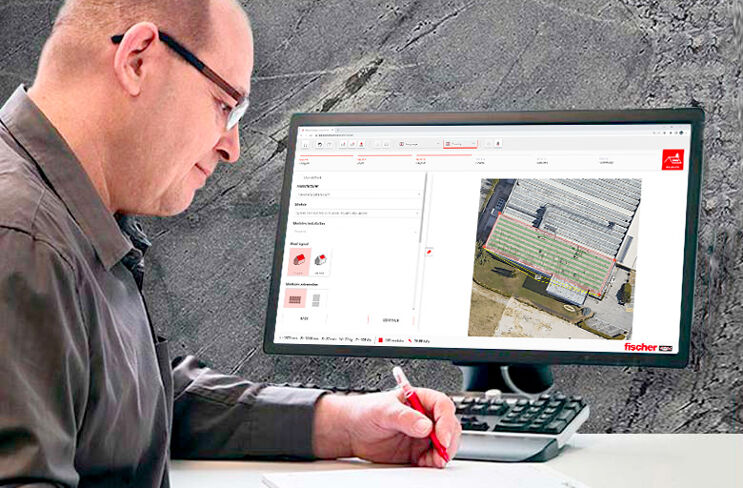
- Products
- Service
- Expertise
- References
- fischer group
- Contact
- Home
- Expertise
- Solar systems
- Pitched roofs with corrugated sheets covering
In the case of structures covered with corrugated sheets, the system involves drilling through the roof covering. Double-threaded fischer screws are then inserted, to which aluminum brackets are anchored, allowing for attachment to the solar rails.
Fischer offers a complete range of aluminum rails that can be used to create sturdy and durable support structures. These rails are designed to ensure corrosion resistance and long-term durability of the photovoltaic system structure.
Discover the products
SOLARPANEL-FIX is an Online module of the FiXperience Suite for the design of mounting systems for photovoltaic panels: it supports professionals in the design of the photovoltaic substructure through a clear and logical flow.
The software allows to automatically calculate the actions of snow and wind loads through the geolocation of the construction site, according to the requirements of the European Standard EN 1991 (Eurocode 1). In addition, it allows to download the bill of materials to create the substructure, the installation plan and a technical report. The latter outlines the structural checks of the system parts, according to the European Standards EN 1993 (Eurocode 3), EN 1999 (Eurocode 9) and according to fischer specifications.
